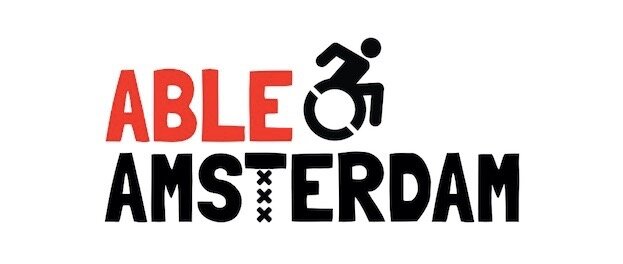How to make your restaurant wheelchair-friendly
Knowing how to make your restaurant wheelchair-friendly can be challenging if you don’t use a wheelchair yourself. You might be thinking, where do I even start? What are the most important features? And what does it really mean to be ‘wheelchair-friendly’?
Based on personal experience as a wheelchair user, and the wonderful input of members of the Accessible Travel Club Facebook group, I’ve listed some key accessibility features below. Free downloadable PDFs can be found at the end of this post.
So, what makes a restaurant wheelchair-friendly?
The entrance
A wheelchair-friendly restaurant starts with an accessible entrance. Wheelchair users should be able to roll in and out of the restaurant without any obstacles or help from others. This means:
Wide doorways (min. 80 cm/ 32 inches, preferably as wide as two doors).
Automatic doors. If they’re not automatic, doors should at least be lightweight enough to allow someone to push or pull easily while moving in their wheelchair.
There should be no steps leading up or down to the restaurant.
The entrance floor should be smooth, i.e. no threshold.
Variety of tables and seating arrangements
Manual wheelchairs are usually lower to the ground, while electric wheelchairs are higher. To suit the needs and comfort of different wheelchair users, you’ll need to provide a variety of tables and seating arrangements. Keep in mind:
Include a mixture of lower and higher tables.
Tables with 4 legs are preferred to tables with 1 leg in the middle. Four-legged tables are easier to roll a wheelchair under; tables with one leg can make this difficult.
Avoid tables with an ‘apron’ or overhang underneath as this gets in the way of a wheelchair.
Tables and chairs should be moveable.
If you have a bar, make part of it lower so that manual wheelchair users can enjoy a drink there too.
Not all wheelchair users stay seated in their wheelchairs at a restaurant. Some people will choose to transfer to a chair. For this reason it’s also a good idea to have a variety of chairs (some with arm rests, some without, some hard seats, some soft) to allow customers to choose what is most suitable for them.
Space
The restaurant should be spacious enough for wheelchair users. This means:
The pathway to the entrance, the seating area, the counter, and the toilets should be wide enough and clear of obstacles.
Furniture should not be placed too close together.
There should be a variety of wheelchair-friendly seating options, not just one specific corner or area of the restaurant.
Lifts or ramps where needed
If your restaurant has multiple floors or seating levels, include a lift or ramp where needed.
Ramps should be at a safe incline. If your ramp is too steep, it becomes dangerous or impossible to use.
Lifts should be wide enough for wheelchair users.
If your restaurant has a lift, get an evacuation mattress so that you can quickly and safely evacuate wheelchair users in an emergency.
An accessible toilet
A wheelchair-friendly toilet is a must. For more information about the features of an accessible toilet click here, or read a detailed checklist to designing a wheelchair-friendly loo.
I highly recommend hiring a professional to advise you on accessible toilet design.
Remember that the space in an accessible toilet is there for your customers, not for storage.
A mobile payment machine
Make sure your restaurant has a mobile payment terminal so that customers paying by card can do so at the table (rather than at a high, out-of-reach countertop).
Signposting
If you’ve got an accessible restaurant, flaunt it!
Consider including a wheelchair sticker at your restaurant’s entrance.
If your restaurant has an accessible route, make this clear by putting up signs.
Signposting the toilet door with a wheelchair icon is especially important so customers know it exists and where to find it.
Labelling the toilet door also makes it clear to other customers why e.g. a male wheelchair user needs to enter the women’s toilets to use the accessible facilities (or vice versa).
Training staff about disability, accessibility & wheelchair etiquette
Finally, training your staff about disability and accessibility awareness is crucial. Educate your team to:
Understand that not everyone in a wheelchair has the same disability and needs.
Address the person in the wheelchair, not their caregiver/ friend/ family member. Do not assume wheelchair users cannot communicate.
Speak to customers in a wheelchair in a normal respectful way, not in a slow, childish, or loud tone.
Never move someone’s wheelchair (with or without them in it) without their permission.
Be open to potential meal modifications. Some disabilities impact dietary needs, meaning e.g. a customer may request having food cut into smaller pieces, or the use of a straw to drink independently, etc.
Ask the wheelchair user if the chair at the table needs to be moved — do not assume it needs moving. Some wheelchair users will choose to transfer out of their wheelchair onto a chair. If so, offer a space to store their wheelchair.
If you accidentally bump into a customer’s wheelchair while they are sitting in it, apologise.
Know what to do in the event of an emergency. This includes how to respond to a toilet’s emergency alarm going off, or how to use an evacuation mattress.
Be open to accessibility feedback.
Be helpful, patient, and accommodating.
Go through your restaurant in a wheelchair yourself
To really understand your restaurant’s accessibility, experience it for yourself. Borrow or rent a wheelchair and navigate everything a customer would use. It’s not the same as using a wheelchair full-time, but it’ll give you an idea of the challenges and improvements that need to be made.
Free Downloadable PDFs
Able Amsterdam has a variety of free downloadable PDF documents about wheelchair accessibility. Click on the images below for free summaries of this blog post:



